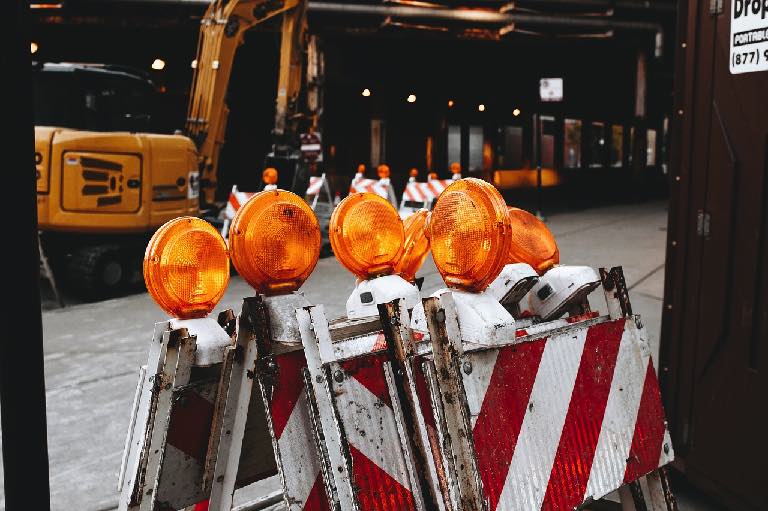In a recent industrial workplace incident on the Gold Coast in May, a worker sustained serious leg and shoulder injuries after a forklift struck him while reversing.
This was not a once-off incident.
Every year since 2012, WorkCover Queensland has accepted an average of 430 workers’ compensation claims. The majority of accepted compensation claims have involved serious injuries where pedestrians have been struck by forklifts. Injured workers have taken 5 days or more away from work to recover.
As a business owner, safety manager or safety officer, you’re well aware that forklifts are heavy, large vehicles. Because they carry heavy, large items, they’re dangerous even when they’re moving slowly. They can seriously injure workers and in worst-case scenarios kill them.
If forklifts operate on your worksite, pedestrian safety is something you must diligently take care of. Here are a few ways to do this.
Maintain pedestrian safety by moving forklifts to another area
Separating forklifts from pedestrians is the quickest, easiest and most obvious way to stop collisions occurring on site. Pedestrian safety won’t be in danger and forklift related accidents won’t occur if forklifts and people aren’t mingling.
Thoroughly briefing pedestrian workers and forklift operators as to where they should and shouldn’t operate and making sure everyone complies is the key to this strategy.
Implementing physical boundaries using anything and everything from fencing, traffic islands, railings and even bright tape stuck to the floor is a way to further bolster compliance.

Implement a traffic management plan for your forklifts
Because many worksite environments require pedestrians and forklifts to operate in the same space, you won’t always be able to separate them completely.
If this is the case, you’ll need to implement a traffic management plan and be diligent about getting forklift drivers and pedestrians to watch out for each other. Create a communication system between pedestrian workers and forklift operators so that it’s always clear who has right of way.
Control how fast forklifts move within your work environment by posting clear and visible signs around your workplace. To motivate compliance with on-site speed limits, create an incentive program that your forklift operators will want to be rewarded by.
Lastly, if you really want to ensure pedestrian safety, implement speed limiting devices on all forklifts. In a worst-case scenario where operators don’t comply with your policies or signage, you’ll still be limiting the speed of their forklifts.
Make it easy for pedestrians and forklift operators to see
Accidents will occur if it’s difficult for pedestrians and forklift operators to see each other. To ensure pedestrian safety, clarity of visibility should be one of your top priorities.
If your worksite happens to be a dark one, brighten it up by installing extra lighting wherever needed. Don’t take chances by allowing dark spots anywhere in your worksite. This is where accidents are bound to occur.
If the fencing, railing or tape on the floor that keeps forklifts and pedestrians separated is getting dull and old, replace it. These physical boundaries need to be visible at all times in order to do their job.
Help your forklift operators see pedestrian workers by having them all wear high visibility vests while on-site. Also, make sure to have plenty of dome mirrors installed throughout your site so both pedestrians and forklift operators are aware of each other when coming around corners.
Lastly, make sure all forklifts have functional mirrors or vision panels so that forklift operators can see pedestrians in every direction – especially when they’re reversing.
Use proximity warning systems
Even with a robust traffic management system, good visibility and a compliant team of employees, accidents can still occur.
Your employees are only human. After long hours of work, employees can fatigue, become forgetful, absent-minded and increasingly unaware of what’s going on around them.
They simply forget to be aware of their surroundings.
It’s during these times that accidents occur, producing the worst injuries or even deaths. Accidents like these also cause your business the most damage in terms of reputation, employee morale and fines from safety authorities.
When both pedestrians and forklift operators aren’t paying attention anymore, we recommend the BodyGuard Pedestrian Safety Warning System.
The system warns forklift operators when they’re about to hurt someone and gives them a chance to hit the brakes.
It could save someone from injury or even death.
Want to ensure pedestrian safety around forklifts on your work site?
Managing traffic in a more disciplined way and giving everyone visibility are great ways to ensure pedestrian safety.
But if you want peace of mind and you’re really serious about seeing pedestrian workers going home safe and sound, we recommend our Pedestrian Safety Warning System.
If you’re interested in finding out more, we’d love to tell more about it.
Just give us a call on +61 (2) 4355 4554 or get in touch via our contact page.
